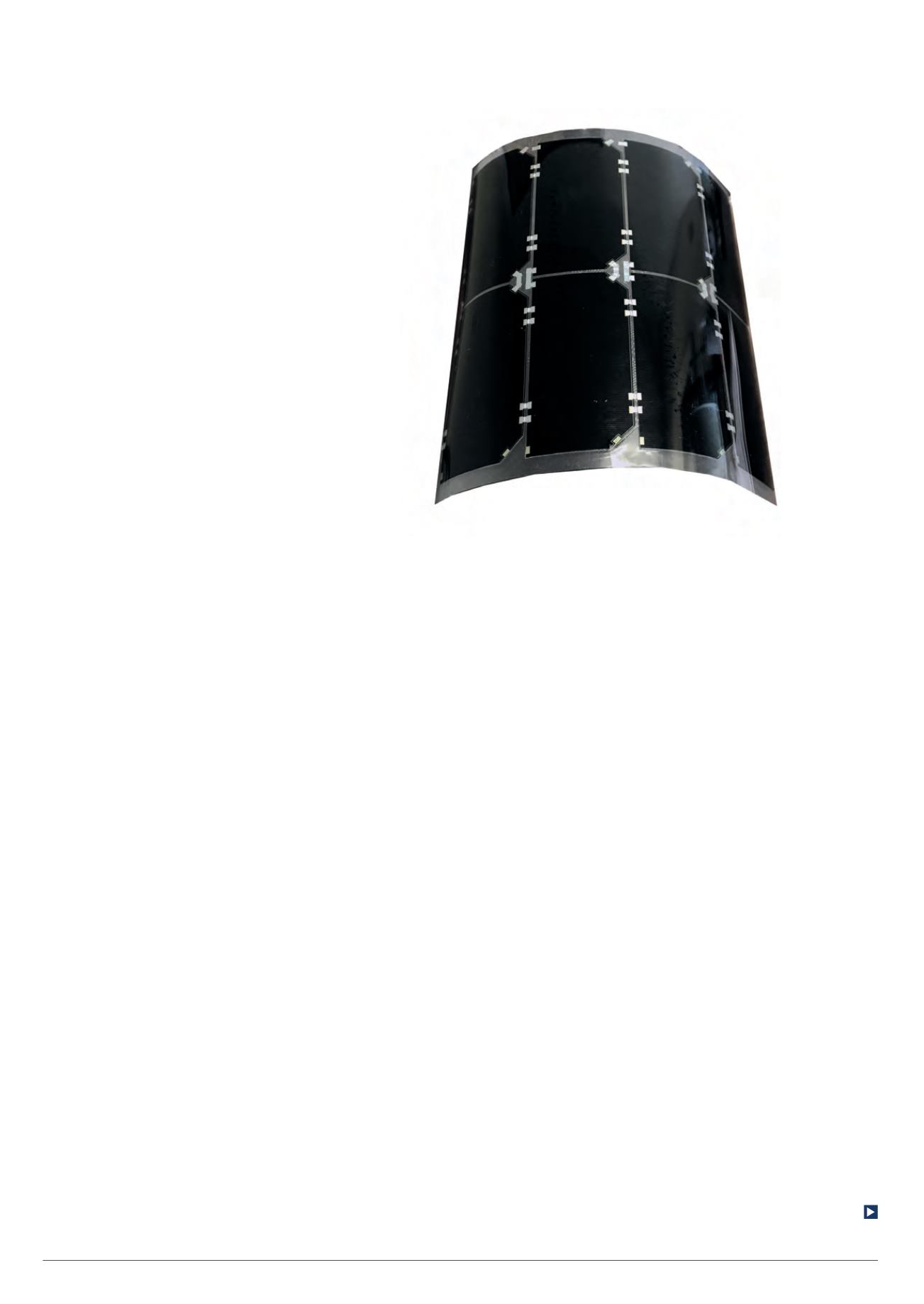

83
Solar power
|
Focus
value indicates the amount of current that
the cell will provide when irradiated by
photons of a particular wavelength.
Solar cells can also be manufactured
with multiple junctions, however, where
layers of cells are grown on top of one
another and with each layer fne-tuned
for a particular spectrum of sunlight. So,
one junction would be manufactured
with chemistry optimised for blue, others
for yellow, red and infrared. In this case
it is possible to harvest more energy out
of each captured photon. If these four
junctions are connected in series, each
produces its own voltage.
Multi-junction cells have multiple p-n
junctions made of different semiconductor
materials. A p-n junction is a boundary
or interface between two types of
semiconductor material, p-type and n-type,
inside a single crystal of semiconductor.
The p (positive) side contains an excess
of electron holes – the lack of an electron
at a position where one could exist in an
atom – while the n (negative) side contains
an excess of electrons.
Each material’s p-n junction will
produce electric current in response to
different wavelengths of light. The use of
multiple semiconducting materials allows
a broader range of wavelengths to be
absorbed, improving the cell’s effciency
at converting sunlight to electrical energy.
However, this effciency is gained at
the cost of increased complexity and
manufacturing price.
Despite their higher price-to-
performance ratio though, they are well
suited to aerospace, where their high
power-to-weight ratio is desirable.
There are cells on the market that are
single, double, triple and quad junctions.
Triple junction is very typical for, and is
the state of the art in, space applications
right now. Several cell manufacturers are
developing effcient and cost-effective
four-junction cells, which will deliver
about another 10% of power over triple-
junction versions. The best triple-junction
cells in a terrestrial environment at the
moment would achieve about 32%
effciency, and moving to four junctions
would increase that to about 35-36% in
terrestrial sunlight.
One supplier points out however
that while simply adding more and
more junctions is all well and good,
increasing the effciency of each
junction matters more.
Series, parallel,
voltage and current
To formulate the most practical solar
panel for a particular UAV involves
connecting numerous cells in various
confgurations. Nominally each cell
produces 2.2 V, so to achieve an
18 V system for example, nine of
them (perhaps ten to allow for a little
headroom) would be connected in series.
For a 50 V system more cells are
stacked to get a voltage closer to the
operating voltage. The advantage of
this ability to connect cells in series
to deliver the required voltage is that
there is no need for step-up or -down
electronics. In fact, power electronics
technology, although sophisticated,
is so well advanced that a UAV solar
system can use off-the-shelf electronic
converters and charge controllers that
offer effciencies as high as 90%.
Cells are connected in series to get
more voltage. In a series connection,
each cell makes its own contribution to
the total, but it’s the current that does
all the work, and because a solar cell is
converting photons of light into electrons,
the electrons are the current: the more
electrons, the more current. Each solar
cell has a particular inherent voltage,
and that doesn’t change with its area but
its current increases with area, so you
choose a size for an individual solar cell
that puts out a certain current.
As an example, a typical triple-junction
cell that covers 25 cm
2
will produce
something like 0.5 A at 2.2 V. According
to basic electrical theory, the power in
Watts of a system is voltage multiplied
by current, so with 2.2 multiplied by 0.5,
each cell will deliver 1.1 W.
If you need 22 V out of the system,
there will be ten cells connected in
series. Each will provide the 2.2 V and
the current will be the same, 0.5 A, in
each of the ten. With ten cells of course,
22 V at 0.5 A gives a total of 11 W.
If you need more current, then more cells
will be connected in parallel. If two were
connected in parallel they would deliver
0.5 A each, so 1 A. With the same
Unmanned Systems Technology
| June/July 2016
Thin-film solar cells use layers of semiconductor material that are 100 times
thinner than c-Si wafers (Courtesy of SolAero Technologies)









